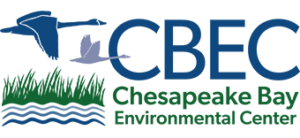Pollinator Meadow
Chesapeake Bay Environmental Center has partnered with US Fish and Wildlife to restore 1.3 acres into a pollinator meadow to display best management practices (BMP). Chesapeake Bay Environmental Center was surveyed by USFWS and CBEC staff to find the best location for an upland flowering meadow. The restoration of the pollinator meadow started early in the spring of 2016.
Pollinator Meadows provide vital habitat for declining bee and butterfly populations that help to increase overall productivity of an ecosystem. Threats to the decline in pollinator populations are due to habitat loss and pesticides.
Meadows do not just provide habitat for bees and butterflies, they are also frequented by birds, mammals, reptiles, and amphibians, seeking refuge in the dense foliage. The meadow also provides structure for sediment erosion control, which protects the surrounding landscape.
The Pollinator Meadow Project is a 5 year management program to ensure environmental productivity beneficial to native pollinator species. CBEC will spend the wintering months preparing butterfly monitoring protocol to include a Monarch Tagging Station and host native bee population studies.
The meadow is full of native grasses found in the natural seed bank and was enriched with a mixture of 34 different northeast annual and perennial wildflowers. Among the natural grasses, observers will encounter: Butterfly Milkweed, Black Eyed Susan, White Snakeroot, Big and Little Bluestem, Broom Sedge, Switchgrass, Indian Grass, and many others beneficial for pollinators.
Each spring wildflowers full of color will sprout among these natural grasses brightening the meadow providing crucial habitat for declining pollinator populations.
Partners:
United States Fish and Wildlife Services (USFWS) https://www.fws.gov/pollinators/Index.html
CBEC Volunteers

